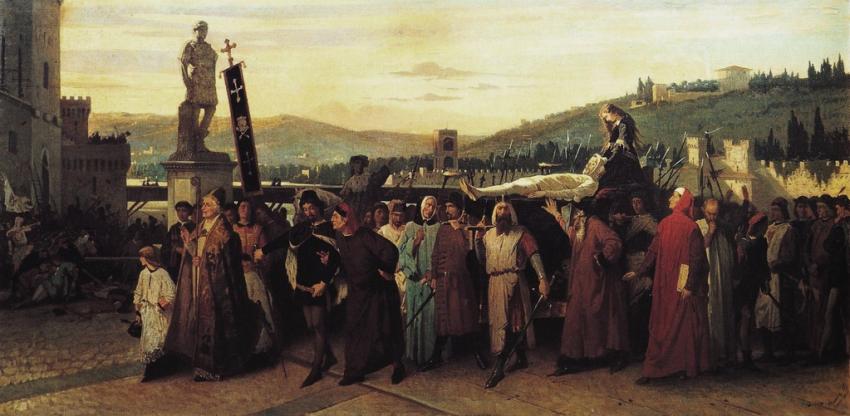- Read offline
- Remove ads
- Access all content
- Use the in-app Map to find sites, and add custom locations (your hotel...)
- Build a list of your own favourites
- Search the contents with full-text search functionality
- ... and more!
Guelphs and Ghibellines
Punch and Judy, Medieval Style

One medieval Italian writer claimed that the factional strife began with two brothers of Pistoia, named Guelf and Gibel. One murdered the other, starting the seemingly endless troubles that to many seemed a God-sent plague to punish the proud and wealthy Italians for their sins. However, most historians trace the roots of this party conflict to two great German houses, Welf and Waiblingen.
The chroniclers pinpoint the outbreak of the troubles to 1215, when a politically prominent Florentine noble named Buondelmonte dei Buondelmonti was assassinated by his enemies (he had broken a marriage contract and married another girl) while crossing the Ponte Vecchio. It was the tinder that ignited a smouldering quarrel all over Italy, particularly in Tuscany.
The atmosphere of city-states, each with its own internal struggles between nobles, the rich merchant class and the commoners, crystallized rapidly into parties. Initially the Guelphs, largely a creation of the newly-wealthy bourgeois, were all for free trade and the rights of the free cities; the Ghibellines were the party of the German emperors, nominal overlords of Italy. Naturally, the Guelphs found their protector in the emperors’ bitter temporal rivals, the popes, which brought a religious angle into the story.
Image by PD Art

